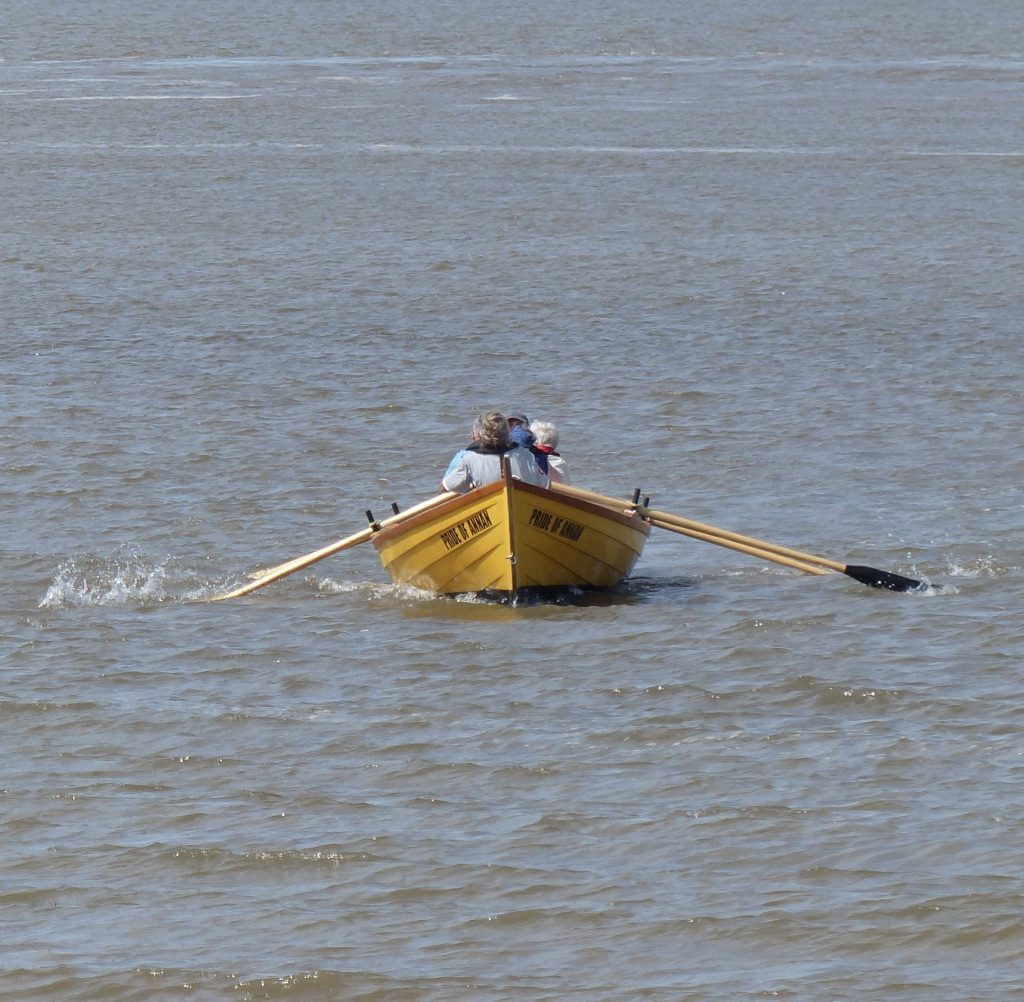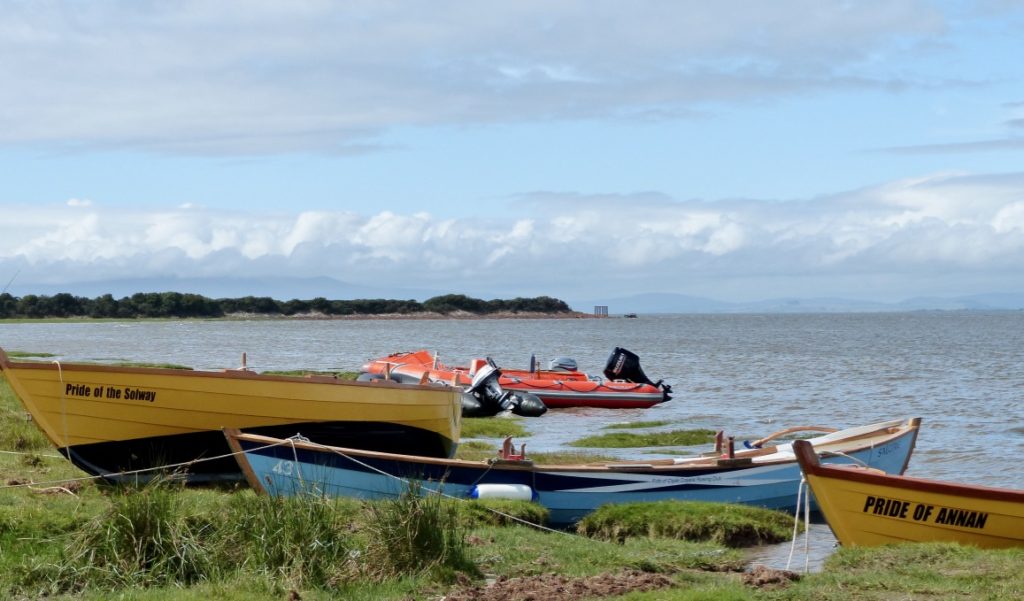
Nowadays the views across the Solway, whilst expansive and magnificent, take in only a few passing boats or ships. It is easy to think that the waters of the Solway have always been quiet, and without much traffic. The Solway however has a rich maritime trade history and boat building past. Maryport in Cumbria and Annan in Scotland both having been important ship building sites producing wonderful sailing ships and grand steamers which travelled the globe.
Another type of craft which would frequently have been seen on the Solway estuary and coastline were small rowing boats, which today are known as St Ayles skiffs, designed to transport both goods and people.
Alan Thompson of the Annan Harbour Action group explained some of the history of these small crafts
Whilst there are a number of forgotten walking routes or ‘waths’ that for centuries have been used to cross the Solway on foot. These routes were known to be a dangerous option having over the years taken many lives when the speed of the incoming tide or the line of the route across the sands was misjudged. Similarly travel on land around the Solway coast during the turbulent centuries suffered in the UK Borderlands was a perilous activity. A rowing boat or punt would for many people have been the transport mode of choice for travelling along the coast or across the estuary – far safer than travelling on land.
Travel by boat would not however have been without it’s perils, with the tidal drag of the estuary constantly changing the lines of the deepest channels, moving sand banks, creating new shallows, eddies and flows. Add to this mix the sometimes unpredictable and stormy nature of the coastal weather and it’s clear that knowledge and skill have always been essential for safe travel by boat on the Solway waters.
A story that illustrates the dangers of crossing the Solway in a rowing boat is that of a love smitten couple – John Edgar and Jean Scott – who in 1771 decided to elope to Gretna Green to get married. The marriage laws in Scotland being different at that time to those of England. To avoid angry parents who wanted to prevent the wedding, the young people chose to hire a boat and crew to row them the short distance from Burgh by Sands marsh in Cumbria, England across the waters to Gretna Green where they could be married legally under Scottish law. Their parents found out about the plans, pursued the couple and also hired a Solway boat and oarsmen to take chase across the estuary. A Solway storm was brewing, whipping up waves. The eloping couple, drawing on the skill of their crew whilst still pursued, fought their way through the waves and arrived safely in Gretna Green where they were married. Unbeknown to them the boat pursuing them capsized in the storm. This resulted in the drowning of one of the oarsmen. It is not known if the young married couple ever returned to England or if they heard about the tragic incident associated with their elopement.
Occasionally these days it is still possible to see traditionally built St Ayles skiffs being rowed along the Solway coastline. In late summer you might get a sighting of small boats rowed by teams of four with a cox steering them, making their way out into the middle of the estuary on a crossing from Annan harbour in Scotland to Bowness on Solway in Cumbria, England – all taking part in an event that marks a locally notorious theft of the Bowness and Dornock Church bells in 1626.

